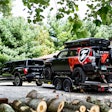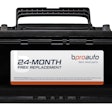 The WeighSafe Hitch lets drivers know right away if the tongue weight is within the truck’s factory towing recommendations/limits.
The WeighSafe Hitch lets drivers know right away if the tongue weight is within the truck’s factory towing recommendations/limits.Product Review: Weigh-Safe Hitches
Monitoring Trailer Tongue Weight The Easy Way
Trailer tongue-weight. Why is that important? Business liability. Vehicle warranty. Driver safety. Vehicle handling. Avoiding accidents.
The weight a trailer places on the hitch, i.e., tongue-weight, plays a critical and decisive role in how a vehicle responds when it’s rolling down the road.
That includes, steering control, and braking in an emergency, the ability to control trailer sway, and the integrity of both the hitch system and the vehicle itself.
Those aspects of safe trailer towing are why every vehicle and hitch manufacturer places a maximum limit on how much tongue-weight is acceptable in keeping the tow vehicle and hitch compliant with safety and operational guidelines.
Exceed those limits, and, in a court of law, anything that happens afterwards is the sole responsibility of the vehicle’s driver.
The only way to make sure the trailer you are towing is within the guidelines set forth in the vehicle’s owner’s manual – and/or as noted on the hitch itself – is to weigh the weight the trailer tongue places on the hitch ball.
 The Weigh-Safe 6″ Hitch Drop Shank kit as tested by HWT staff.
The Weigh-Safe 6″ Hitch Drop Shank kit as tested by HWT staff.That’s where the innovative Weigh-Safe Hitch comes into play. It has the tongue- weight (TW) scale built right into the portion of the hitch shank that holds the stainless steel hitch ball.
Weigh-Safe measures the downforce on the hitch ball. That force is then displayed in a dial gauge that’s easily read and has increments between 0-1,500 pounds, with green and red backdrop showing what is regarded as “safe” and “dangerous” weights.
Adjusting the load in/on the trailer deck allows you to easily control TW just by monitoring the dial.
 Dial gauge shows the tongue-weight as measured under the hitch ball.
Dial gauge shows the tongue-weight as measured under the hitch ball.The hitch, which is rated for 12,500 pound trailered weight and 1,500 pounds TW, is as much a piece of art as it is a safety tool.
The machine work and tooling in the metal of the drop shank and the hitch ball/gauge housing are exceptional, the fit of the pin that locks the hitch ball, the shank adjusting pins, and grooves where the hitch ball slides up/down the shank all align perfectly.
There’re two stainless steel hitch balls – a 2” and a 2-5/16” – with the kit, making it ideal for all conventional towing applications.
Build quality: None better. I have never used a more convenient or better-designed drop-shank hitch setup.
I was also impressed with the price: $288 for the 6” Drop Hitch I tested.
That’s a good price for business owners who tow equipment trailers loaded with a skid-steer, min-excavator, or other heavy parts without employing a weight-distributing hitch per the vehicle manu’s recommendations/requirements.
At least with the Weigh-Safe Hitch in place the load can be adjusted so the TW is within the correct range, maintaining some semblance of proper handling and vehicle attitude.
Again, it’s a towing safety and liability issue.
The Weigh-Safe Hitch takes the guesswork out of trailer towing—and it leaves no doubt as to whether or not you are towing the trailer in compliance with the vehicle and hitch manufacturer’s safety guidelines.—Bruce W. Smith/Senior Editor
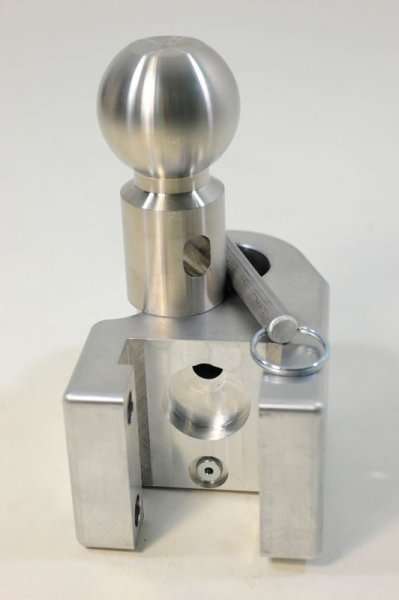 Stainless steel hitch ball is secured with lock pin, which is kept in place by the drop shank itself. Note quality of machine work.
Stainless steel hitch ball is secured with lock pin, which is kept in place by the drop shank itself. Note quality of machine work.
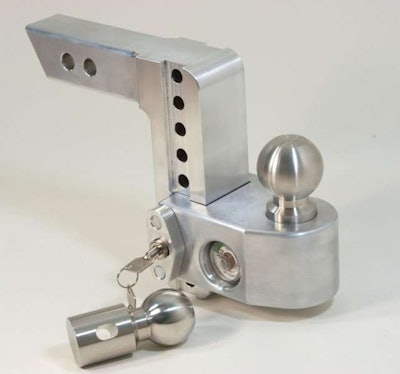 Weigh-Safe offers multiple drop-shank lengths. This is the 6" model that comes with both 2" and 2-5/16" stainless steel hitch balls. Price: $288.
Weigh-Safe offers multiple drop-shank lengths. This is the 6" model that comes with both 2" and 2-5/16" stainless steel hitch balls. Price: $288.
 Hitch ball height is adjustable using key-lock double-pin setup. Hitch components are very high quality.
Hitch ball height is adjustable using key-lock double-pin setup. Hitch components are very high quality.
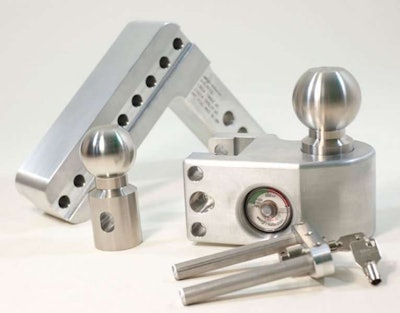 Machine and milling work is excellent. Tongue-weight gauge is also very accurate.
Machine and milling work is excellent. Tongue-weight gauge is also very accurate.
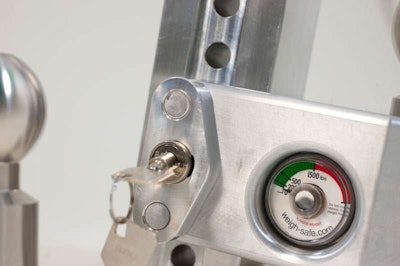 Tongue-weight is measured at base of the hitch ball. Locking ball-height adjusting pins operate smoothly.
Tongue-weight is measured at base of the hitch ball. Locking ball-height adjusting pins operate smoothly.
